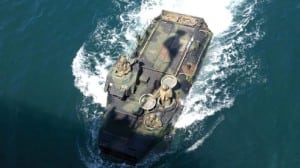
Upgraded versions of the Marine Corps’ legacy amphibious assault vehicle (AAV) were cleared for production this week under a milestone C decision that also resulted in an $11 million contract for Science Applications International Corp. [SAIC] to begin the work.The AAV survivability upgrade program entered low-rate initial production (LRIP) on Aug. 17, according to the Marine Corps. On Aug. 22, the service handed SAIC a contract to overhaul three legacy command-and-control AAVs with the SU design.AAV SU upgrades the existing…

 By
By 








